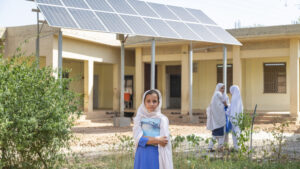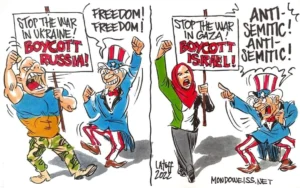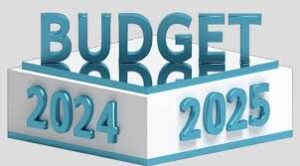It will not be an exaggeration if it is said that Pakistan economic revival is a story of resilience. Just a few months ago, Pakistan’s economic future looked murky and bleak. The nation teetered on the brink of default, its stock market sputtered, and inflation soaring. But a remarkable turnaround is underway. Pakistan has clawed its way back from the precipice. Bold policies, international backing, civil-military collaboration, diplomatic finesse, and a newfound national resolve have fueled a remarkable resurgence. Data and expert analysis reveal this noteworthy shift, showcasing a nation defying the odds and charting a course towards a brighter tomorrow. This article explores the key indicators that illuminate Pakistan’s positive trajectory.
Pakistan Economic Revival: Growth on the Rise, Inflation on the Decline
One of the most promising signs is the steady rise in Pakistan’s Gross Domestic Product (GDP). The World Bank estimates a growth rate of 4.2% for the fiscal year 2023-2024, marking a significant improvement over the previous year’s sluggish performance. This growth is further bolstered by the fact that Pakistan’s GDP has reached an all-time high, exceeding pre-pandemic levels. This signifies a robust economic foundation capable of weathering external challenges.
Pakistan’s economic woes included rampant inflation, peaking at 38.42% in May 2023. This meant everyday essentials became significantly more expensive. However, a swift response from the Government and the State Bank of Pakistan (SBP) saw application of a multi-pronged strategy to combat inflation. A tighter monetary policy, with interest rates raised by 5 percentage points, and stricter import controls helped in stabilizing the exchange rate besides managing the current account deficit. Those measures and a more stable global market have yielded significant results. As of April 2024, inflation has been brought down to 17.23%, a remarkable achievement in just 11 months. This improvement offers a much-needed respite for Pakistani consumers and businesses.
Renewed Investor Confidence
Buoying this economic optimism is the resurgent performance of the Pakistan Stock Exchange (PSX). The exchange has been on a record-breaking spree, consistently surpassing milestones has breached the significant psychological barrier of 75,000 points. This surge in investor confidence reflects a growing belief in Pakistan’s economic prospects. The KSE-100 Index, a key benchmark for the Pakistani stock market, has witnessed significant gains, attracting both domestic and foreign capital. This renewed vibrancy in the stock market serves as a crucial indicator of Pakistan’s economic revival and its potential for attracting long-term investments.
Unlocking Foreign Investment
Recognizing the importance of foreign direct investment, Pakistan established the Special Investment Facilitation Council (SIFC) in July 2023. This unique forum, combining Government and military stakeholders, aims to streamline the investment process and fosters a more welcoming business environment. The SIFC facilitates faster decision-making, removing bureaucratic hurdles that often discourage the investors. It also has a particular focus on attracting investment from Gulf countries, leveraging strong regional ties and potential shared interests.
The recent commitment of significant investments from regional powerhouses like Saudi Arabia (KSA), the United Arab Emirates (UAE), and Qatar is a testament to the growing confidence of international investors in Pakistan’s economic potential and the success of SIFC’s vision. Saudi Arabia’s Crown Prince Mohammed Bin Salman announced plans to invest US $10 billion in Pakistan’s energy sector. Similarly, the United Arab Emirates (UAE) committed US $10 billion to invest in promising economic sectors in Pakistan in May 2024. Qatar is also set to invest billions of dollars in Pakistan, providing a much needed economic cushion. These investments are expected to inject much-needed capital into key sectors, further stimulating growth and creating employment opportunities.
International Support and Fiscal Discipline
The International Monetary Fund (IMF) has played a pivotal role in stabilizing Pakistan’s economy. The successful completion of the previous tranches and the ongoing negotiations for a potentially larger program signifies the IMF’s satisfaction with Pakistan’s commitment to fiscal discipline. This vote of confidence from a prestigious financial institution strengthens Pakistan’s position on the global economic stage and paves the way for further financial assistance.
Curbing Capital Flight and Smuggling
The Government with the support of Security Forces launched a multi-pronged attack on capital flight and rampant smuggling, which were choking the country’s economic stability. Stricter foreign currency exchange regulations, implemented by the Government and the State Bank of Pakistan, included tighter scrutiny of large cash transactions, increased documentation, and limitations on non-essential outward remittances. All this has resulted in a significant 20% decrease in undocumented dollar outflow during the first half of 2024, compared to the same period in 2023.
Recognizing the widespread menace of smuggling, the Government launched a comprehensive anti-smuggling campaign spearheaded by the military. That campaign targeted narcotics, fuel, and other smuggled goods through increased border security patrols, improved intelligence gathering, and cooperation with regional partners. The success of this initiative is evident with a 72% increase in the value of confiscated smuggled goods, during the first quarter of 2024 compared to the previous year. These measures not only safeguard Government’s revenue but also create a fairer playing field for legitimate businesses, contributing to a more stable economic environment.
Privatization Saga
In a bold move to revitalize Pakistan’s economy, the Government has significantly expanded the privatization program. This broader approach aligns with long-standing recommendations from the International Monetary Fund (IMF) which highlighted the burden placed on Pakistan’s budget by inefficient State Owned Enterprises. The IMF reports highlight the high asset-to-employment ratio of such enterprises. While SOEs hold a substantial portion of national assets (44% of GDP in 2019) compared to most Middle Eastern countries, their contribution to employment remains abysmally low. Furthermore, the IMF estimates that nearly half of these SOEs operated at a loss in 2019, creating a continuous drain on public resources and hindering Pakistan’s economic growth. This expansion of the privatization program signifies the Government’s commitment to a more comprehensive economic overhaul, aiming to unlock the potential of SOEs and address these fiscal challenges.
Also Read: SIFC: Powering Pakistan’s Economic Renaissance
A Unified National Approach and Pakistan Economic Revival
Pakistan’s military leadership, under the guidance of the Chief of Army Staff (COAS), has actively supported the Government’s economic revival efforts. Military diplomacy has played a crucial role in securing foreign investments and fostering stronger relations with key regional partners. This collaboration between the civilian and military leadership demonstrates a unified national approach towards economic development.
Despite the challenges Pakistan has overcome, the path forward is bright. The economic indicators paint a hopeful picture – a robust GDP, controlled inflation, a thriving stock market, and renewed international confidence. The Government’s commitment to fiscal discipline, coupled with its strategic initiatives like privatization and curbing capital flight, positions Pakistan for sustainable growth. With continued collaboration between civil and military leadership, and the unwavering spirit of its people, Pakistan is poised to become a significant player in the global marketplace. The nation’s economic resurgence is a testament to its resilience and its determination to build a brighter future.
The opinions shared in this article reflect the author’s personal views and do not necessarily align with the institution’s official stance.

![Pakistan Economic Revival [Image via EPA]](https://policy-wire.com/wp-content/uploads/2024/05/9ac489f0b917458a84d6070881d163da_18.webp)


